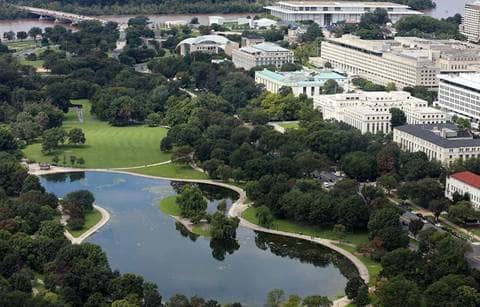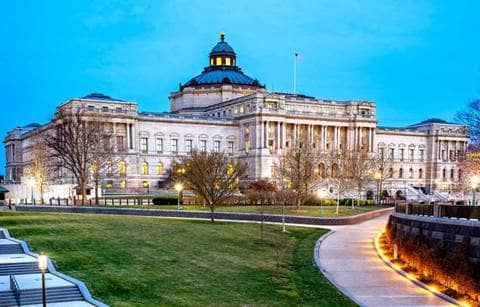Entering 2025, manufacturing businesses faced looming uncertainty about taxation. Some beneficial rules within the Tax Cuts and Jobs Act (TCJA) had previously expired in 2021, and the bulk of that law was also scheduled to expire at the end of 2025. After gaining majorities in Congress, Republican leaders generally promoted plans to extend business favorable tax changes, but the specific form of such rules was open for negotiation. Adding to the complexity were concerns about tariffs, global trade, and international taxation. So where does that leave manufacturers? The One, Big, Beautiful Bill provides some clarity.
Following the July 4 enactment of H.R. 1, the One Big Beautiful Bill (OBBB), the state of business taxation is now settled for at least several years. The new law is expansive but largely involves an evolution and extension of TCJA rules, as opposed to the creation of an entirely new framework. That said, the OBBB does introduce new complexity along with some brand-new tax concepts. For manufacturers, the legislation offers welcome clarity and opportunities for strategic tax planning. Our industry tax specialists provide a summary of key provisions and planning ideas to help manufacturers navigate these critical areas:
- Business entity parity permanently retained
- Permanent restoration of 100% bonus depreciation and expansion of expensing
- Creation of a new manufacturing facility deduction
- R&D: Restoration of full expensing of domestic expenditures
- Modification of limitation on business interest
- Increased SALT cap
- Scaling back the IRA’s energy-related credits
- International tax changes
- New reporting for overtime pay and 1099s
Business entity parity permanently retained
The TCJA made two related changes to the effective tax rates on business income. In the first case it lowered the corporate tax rate to 21% on a permanent basis. A companion provision was the creation of the 20% qualified business income deduction (QBID) under Section 199A. Subject to certain limitations, QBID provides a deduction for individual taxpayers that reduces the effective tax rate applicable to pass-through business income. However, unlike the corporate rate change, QBID was scheduled to expire at the end of 2025.
The OBBB made no changes to the corporate tax rate but permanently extended the 20% QBID. Technical adjustments were made to the income threshold at which the limitations for W2 wages, asset basis, and on specified service trade or business income are applicable. Those adjustments are not expected to impact most manufacturers in a meaningful way. Finally, the OBBB created a minimum deduction of $400 for certain taxpayers that are active with respect to the pass-through business but which are otherwise limited in claiming a deduction.
Planning considerations: Permanently extending the status quo for corporations and passthrough businesses avoids a potential flashpoint tax planning item. However, it is still a great time for businesses to evaluate whether their existing tax structures are optimized. To that end, the totality of tax rules applicable to corporations and pass-through entities should be reviewed. For example, the OBBB expanded the rules relating to the qualified small business stock gain exclusion under Section 1202, which could change the tax considerations if a corporate conversion is being considered.
Permanent restoration of 100% bonus depreciation and expansion of expensing
Accelerated depreciation has frequently been utilized by Congress to provide tax relief to businesses. The TCJA included 100% bonus depreciation for several years prior to implementation of an annual 20% phase-down that began in 2023. As such, bonus deprecation was scheduled to equal 40% in 2025, 20% in 2026, and 0% in 2027 and beyond. Fortunately, the OBBB restores 100% bonus depreciation for qualifying property acquired after Jan. 19, 2025. This change has also been made on a permanent basis, so the 100% deduction will be maintained into the future (absent future changes by Congress).
On a related note, the OBBB permanently enhances the Section 179 deduction, which allows for increased expensing of business property. The deduction limitation is increased from $1,250,000 to $2,500,000. In addition, the asset acquisition limitation is increased from $3,130,000 to $4,000,000. This results in the deduction, as modified, being fully phased out for asset purchases of $6,500,000 or more. The new limitation amounts will also increase annually for inflation. These increases take effect for property placed in service during tax years beginning after Dec. 31, 2024.
Planning considerations: Deducting the cost of qualified assets immediately, rather than writing them off over time, can significantly reduce the current taxable income and related tax of a manufacturer. When evaluating Section 179 and bonus depreciation opportunities, it is important to note that they each have their own set of rules, and the related state tax treatment may vary. Careful attention should also be given to acquisition dates and placed in service dates to confirm eligibility for either the newly restored 100% bonus depreciation or Section 179 expensing. Both of these changes have retroactive effect, but there are important nuances to the effective dates.
Creation of a new manufacturing facility deduction
During the 2024 campaign, President Trump suggested that a potential 15% tax rate might be provided for businesses completing manufacturing and production activities within the United States. That proposal never materialized, but a new tax incentive was included in the OBBB for businesses that invest in new domestic manufacturing and production facilities. Such incentive is provided in the form of a new category of 100% deduction.
New Section 168(n) creates a 100% deduction for qualified production property (QPP) that is used as an integral part of the taxpayer’s qualified production activity (QPA). This deduction is essentially an expansion of the concept of 100% bonus depreciation to include property that would not otherwise qualify for accelerated depreciation under the rules discussed above. Two important definitions determine eligibility for this deduction:
- QPP is any nonresidential real property that is placed in service in the United States, is new property, and which is used by the taxpayers as an integral part of a QPA. The term specifically excludes property used for offices, parking, administrative services, sales activities, research activities, software development, engineering activities, or any other non-QPA activity. A limited relaxation of the new property requirement could be available in circumstances where the property is purchased by the taxpayer and no one previously used it in a QPA during the period beginning on Jan. 1, 2021 and ending on May 12, 2025.
- QPA includes any manufacturing, production, or refining of tangible personal property that results in the substantial transformation of the product. That definition is similar to rules that previously existed for the domestic production activities deduction (DPAD) prior to the termination of Section 199 by the TCJA.
The QPP deduction requires compliance with both beginning of construction and placed in service dates. Construction must begin after Jan. 19, 2025, and before Jan. 1, 2029. The property must also be placed in service before Jan. 1, 2031. The deduction is subject to a new recapture rule that is triggered if the QPP is used for something other than a QPA in the 10-year period following the initial deduction.
Planning considerations: Manufacturers planning to acquire or construct new facilities should evaluate the applicability of this new accelerated depreciation opportunity and consider a cost segregation study to accurately categorize qualifying costs. Pairing the new QPP deduction with the expanded 100% bonus depreciation rules will allow businesses to fully realize the tax benefit of substantially all of their investments in new manufacturing and production facilities. However, the potential benefits do come with strings attached in the form of detailed definitional requirements that must be satisfied. In that respect, advanced planning is recommended.
R&D: Restoration of full expensing of domestic expenditures
Prior to the TCJA, businesses were able to immediately deduct certain research and experimentation expenses under Section 174. Those rules provided tax incentives to both businesses in the startup phase and operating companies. However, the TCJA dramatically changed Section 174 by imposing a capitalization and amortization regime. Beginning in 2022, businesses were required to capitalize Section 174 costs and amortize them over five years (domestic costs) or 15 years (foreign costs).
The OBBB reinstates the immediate deduction of all domestic research and experimental expenses. Foreign costs are excluded from the OBBB changes and will continue to be amortized over 15 years.
What about unamortized domestic R&D costs capitalized in 2022, 2023, and 2024? Taxpayers may continue to amortize such costs over the remainder of their five-year periods. However, the OBBB provides two additional accounting method change elections. First, all taxpayers may elect to deduct the remaining unamortized costs immediately in 2025 or deduct such costs ratably over 2025 and 2026. Certain taxpayers meeting the small business taxpayer definition in 2025 will have a third option to amend their returns from 2022 through 2024 to remove the capitalization of domestic R&D in such years. For this purpose, a small business taxpayer is defined by Section 448(c) to include those with gross receipts under $31 million for the prior three years and those not considered a tax shelter.
Planning considerations: For many manufacturers, the amount of unamortized R&D costs is substantial. Modeling should be performed to determine the optimal timing for deducting prior year costs, including interplay with various other tax provisions and planning around potential tax losses that might be generated.
Modification of limitation on business interest
The OBBB included several changes to the interest expense limitation under Section 163(j). Most importantly, it restores the limitation to its initial form by once again allowing depreciation, amortization, and depletion to be added back in computing adjusted taxable income (ATI). That is the base upon which the 30% limit is applied, so it will thereby increase interest expense deductions for many manufacturers. This is effective for tax years beginning after Dec. 31, 2024, and will be permanent.
The OBBB further modified the definition of ATI to exclude net income inclusions under Sections 951(a), 951A(a), and 78. Such rules relate to international tax income inclusions. This change will apply to tax years beginning after Dec. 31, 2025.
Notably, the OBBB also expands the scope of the interest limitation by requiring it to be calculated before any elective interest capitalization under Section 263(a) or Section 266. Previously, the TCJA legislative history indicated that capitalization regimes would apply prior to the interest limitation, which resulted in capitalized amounts being recharacterized and escaping Section 163(j). Now, that ordering is inverted, and the business interest expense limitation will apply first. This restriction will be in place for tax years beginning after Dec. 31, 2025. Required capitalization under Sections 263(g) or 263A(f) will continue to apply prior to the interest limitation.
Planning considerations: The restoration of ATI addbacks is a substantial change that will benefit manufacturing businesses. To optimize interest expense deduction planning, the primary focus will be on maximizing depreciation or amortization deductions. Such items now have the effect of both reducing taxable income and increasing ATI. The retroactive nature of the calculation change is also significant since it opens up many more deductions during 2025.
Increased SALT cap
Of particular interest to manufacturers structured as flow-through entities for tax purposes, the OBBB temporarily increases the individual cap on state and local tax (SALT) deductions from $10,000 to $40,000 ($20,000 in the case of a married taxpayer filing separately) beginning in 2025. Such amount will increase to $40,400 in 2026 ($20,200 if filing separately) and will then increase 1% per year through 2029. The increased cap will also be subject to an income-based phase-out but will never go below $10,000. The SALT cap is scheduled to revert back to $10,000 for 2030 and beyond.
Upon the original implementation of the SALT cap under the TCJA, most states subsequently came out with some form of pass-through entity tax (PTET) regime to shift the state tax burden from individuals to the entity level, thereby alleviating the cap on tax deductibility. Although earlier versions of the OBBB sought to curtail the prevalence of state PTET’s, the final version of the bill excluded any PTET changes from a federal tax standpoint.
Planning considerations: With some renewed clarity around the SALT cap landscape, now is a good time for flow-through entities to review their state tax filing approach as it relates to pass-through entity tax elections.
Scaling back the IRA’s energy-related credits
The Inflation Reduction Act (IRA) significantly expanded available tax credits related to renewable energy. Broadly speaking, the OBBB accelerates expiration dates for many tax incentives while tightening the rules for those that will continue. However, effective date rules are critical since the OBBB will not impact all projects in the same manner. A preliminary summary of changes for manufacturing businesses includes the following:
- Expiration of EV and recharging property credits — Three different tax credits have been available for the purchase of electric-, hybrid-, and hydrogen-powered vehicles by both individuals and business. All of those credits will terminate for any vehicles acquired after Sept. 30, 2025. However, a slight reprieve was provided for the installation of alternative fuel refueling property, which included EV charging equipment. In that case, the Section 30C credit will be available for property placed in service by June 30, 2026.
- Modification of the Section 45X advanced manufacturing production credit — This credit incentivizes the production of renewable energy components and critical minerals. The core structure of the credit has been retained, which will provide continued opportunities. Key changes include: (1) expiration of the credit with respect to wind energy components produced and sold after 2027, (2) expansion of the critical minerals definition to include metallurgic coal, and (3) creation of new foreign entity restrictions.
- New restrictions on wind and solar credits — The OBBB makes a variety of changes to the production tax credit (PTC) under Section 45Y and investment tax credit (ITC) under Section 48E for wind, solar, energy storage, and other technologies. The headline item is a termination of such credits for wind and solar projects placed in service after 2027, except for projects that begin construction within one year of OBBB enactment. Other technical modifications to the rules may further tighten tax credit opportunities.
Planning considerations: Manufacturers planning to take advantage of the IRA’s renewable energy credits should revisit their plans in light of the OBBB changes. Large scale projects with long supply chain lead times must be expedited to meet the beginning of construction test within the next year.
International tax changes
Internationally active manufacturers should be mindful of several tweaks to the framework introduced with the TCJA that impact how GILTI (global intangible low-taxed income) and FDII (foreign-derived intangible income) are calculated. The OBBB eliminates the 10% QBAI (qualified business asset investment) base for both GILTI and FDII. For manufacturers, the change will likely increase GILTI inclusions and increase FDII deductions. Additionally, the OBBB modifies expense allocation rules that previously had the effect of increasing overall GILTI tax after foreign tax credit and impacting FDII deductions. The expense allocation changes include removing allocations of interest, research, and other expenditures to GILTI income and considering U.S. source. These changes will apply beginning in 2026.
The OBBB also modifies the rates computed for GILTI and FDII. The Section 250 deduction rate for GILTI will be reduced from 50 to 40%. The Section 250 deduction rate for FDII will be reduced from 37.5 to 33.334%. The adjustments to the Section 250 deduction rates are intended to produce an effective tax rate of 14% for both pools of income. These changes also take effect in 2026.
Planning considerations: Manufacturers should carefully model the impacts of the removal of QBAI, rate changes, and expense allocation changes. Many manufacturers may have had limited ability to take advantage of FDII due to a high QBAI fixed asset base and may now have additional opportunities to model and plan for future tax years.
New reporting for overtime pay and 1099s
The OBBB created a new deduction, available from 2025 through 2028, for employees that receive overtime pay. This is ultimately an individual tax item for employees but does require specific W-2 reporting. The new provision will allow for a maximum deduction of $12,500 ($25,000 for joint filers) for qualified overtime compensation per year and is subject to phase out based on income level. Overtime compensation is defined by the rules in the Fair Labor Standards Act and generally includes the 50% extra amount paid to workers for overtime. Qualified overtime compensation must be reported separately on an employee's form W-2.
On the topic of information reporting, the OBBB increases the dollar threshold for Form 1099-MISC and 1099-NEC, which has been set at $600 for many years. The OBBB increases that threshold to $2,000 beginning with respect to payments made in 2026 and indexes the amounts for inflation beginning with the 2027 calendar year.
Planning considerations: While more guidance is likely forthcoming, companies paying qualified overtime should ensure they are prepared for separate W-2 reporting and fielding potential questions from employees related to this new deduction.
Final thoughts on the One, Big, Beautiful Bill’s impact on manufacturers
The OBBB offers a powerful set of tools to reduce tax liability and reinvest in growth. The summary above is intended to highlight the provisions most impactful to manufacturers, but it’s by no means comprehensive. The bill text is more than 1,000 pages, and with complexity comes the need for careful planning. Now is the time to work with your tax advisor to model scenarios, optimize tax positions, and align your strategy with the new rules.





